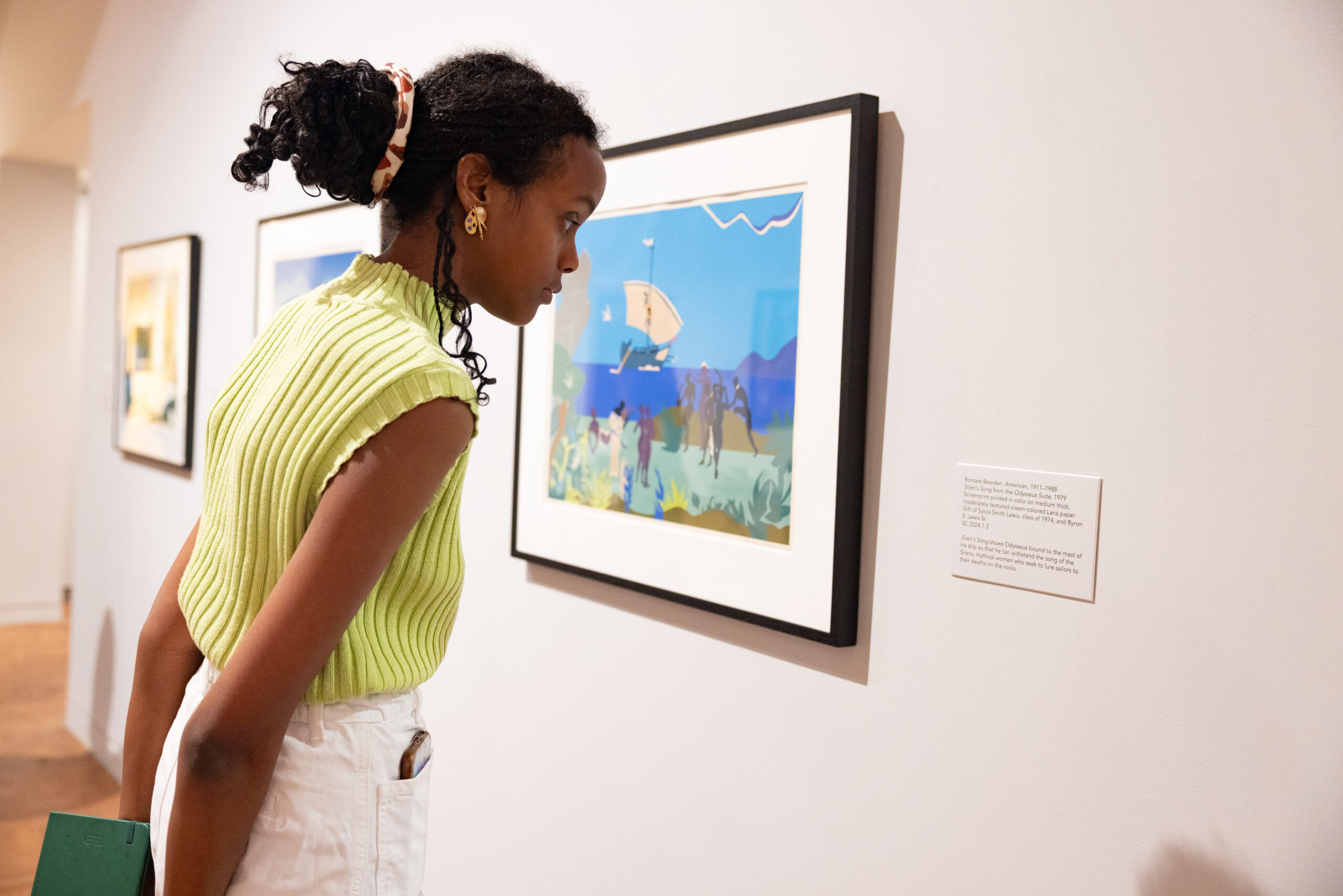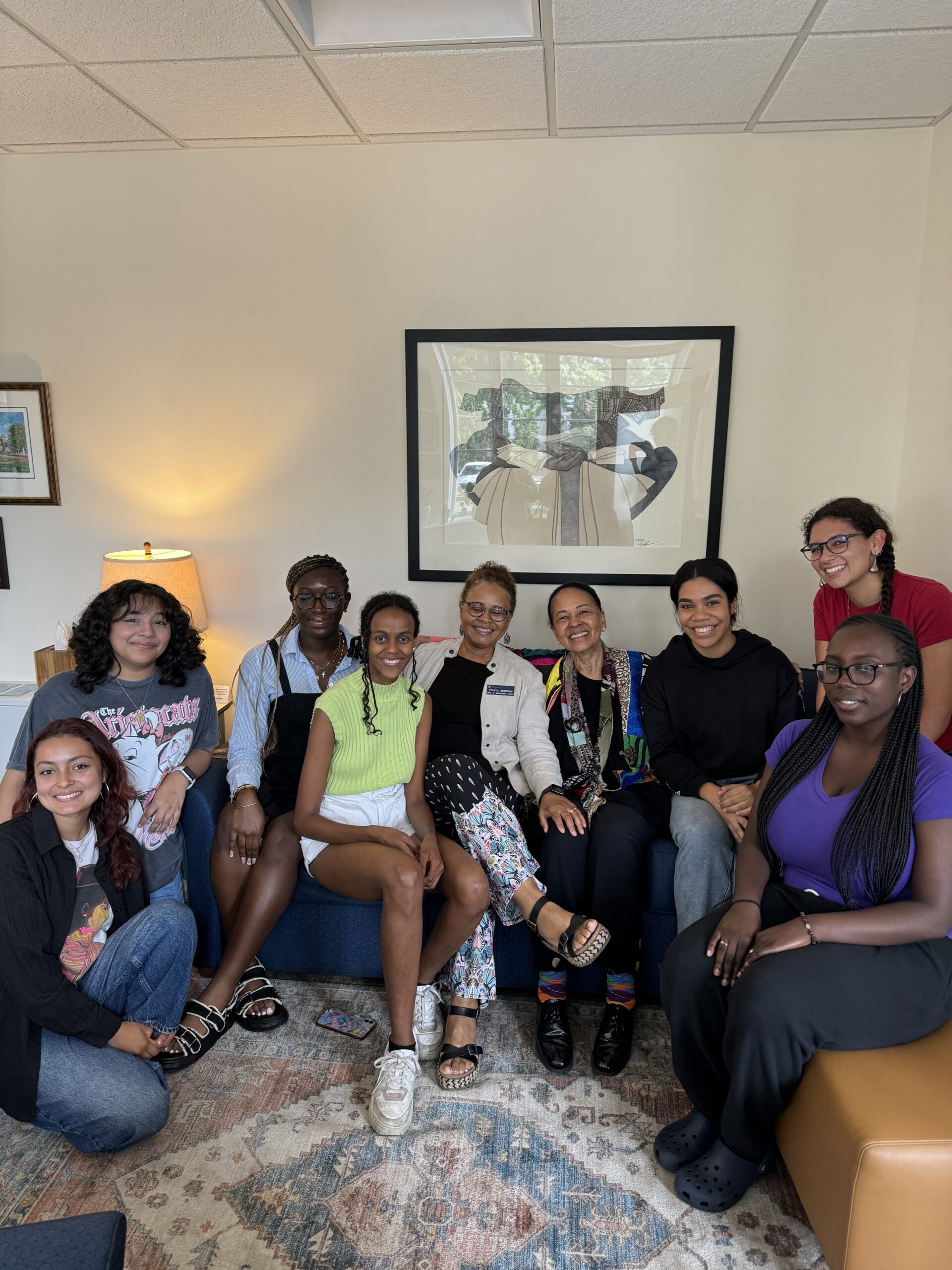
I was honored to lead a ‘Gallery Talk’ with students on campus about the art my husband Byron and I gifted to Smith College. The students explored art and read labeled histories to discover our shared humanity and community.
I was prepared to discuss the arts and activism from a personal perspective. I also wanted to discuss the ‘white gaze’ and the ‘Black Feminist Gaze.’ We will get to those ‘gaze’ topics another time.
I discussed the Black Arts Movement (which I am a product of), a global cultural arts movement from 1965 to 1975 that was a response to American white supremacy and a way to fortify black – and African American culture. We considered the Black Arts Movement an extension of the Harlem Renaissance in New York. The movement’s goals were artistic, self-empowering, and community-oriented. It included establishing Afrocentric repertory theater companies, discovering and supporting visual artists, and public art projects, and going high-gear into publishing, literary, creative ventures, filmmaking, dance, theater, and more.
Most of the artists featured in our collection were leaders and part of the Black Arts Movement. The Black Arts Movement included Black artists in many genres—painters such as Betty Blayton and Romare Bearden, writers such as Sonia Sanchez, a UMass and Amherst College professor, and a poet called the ‘mother of the Black Arts Movement,’ a person whom I lived with and worked for as an au pair to her twin sons.
We discussed racism and colonialism, why few Black artists were featured in museums and mainstream galleries, and the reparative and restorative work currently taking place in museums like SCMA.
Here are some of the Student Questions
- How did you get started collecting art?
- Do you remember the first piece of art you bought?
- How did you approach adding pieces to your collection?
- Are you more drawn to subject matter, artists, etc.?
- Is there work that you still want to add to your collection?
- Please talk about your current and past experience and legacy at Smith.
- What prompted the creation of BSA (Black Student Association), and what impact do you think BSA should have now?
- You and your peers advocated, self-governed, and took action to establish spaces for Black students when such efforts faced significant resistance.
- What strategies or principles would you recommend to today’s students who want to create transformative change in their communities or institutions, particularly in environments that may not always be receptive?
- How has the role of BSA evolved over the years, and why do you believe it is still essential for Black student communities in predominantly white institutions to have such alliances?
- With growing emphasis on STEM fields as pathways to economic mobility, how do you see the role of Black students in the arts, dance, and theater as equally vital?
- Why is it important for Black voices and stories to continue flourishing in these creative spaces, especially in a world that increasingly values STEM
- Looking back at your impact at Smith and beyond, what gives you the most pride?
- Is there anything that you would like to see today’s Black Smithies continue or take in a new direction?

(The Gallery talk was co-sponsored by Smith College Museum of Art and the Mwangi Center, c/o the Office of Multicultural Affairs.)
Gallery Talk Photo Highlights

















































“The Keeper,” a limited print by artist Charles Bibbs, was donated to the Black Student Alliance (BSA) by Sylvia S. Lewis ’74 and her husband, Byron E. Lewis Sr. It is currently displayed at the Mwangi Cultural Center, inside the director’s office at Smith College, @mwangi_smith. The artist said that we are ‘keepers’ of our culture. His artwork is known for African American images that convey a feeling of spirituality, majesty, strength, and dignity.